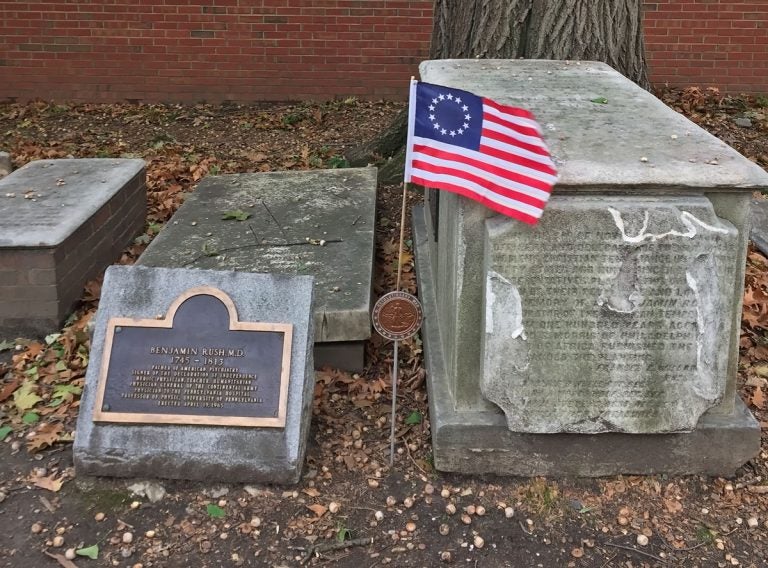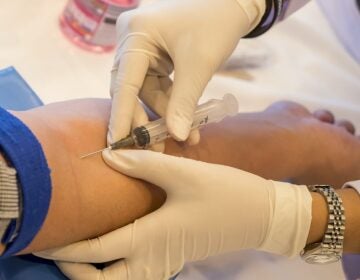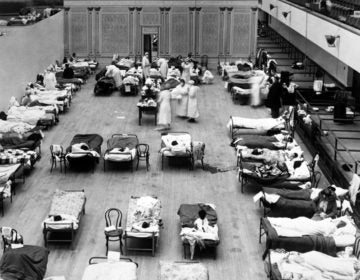Philly’s deadly epidemic that gave birth to public health
The deadly yellow fever epidemic of 1793 rocked Philadelphia, then the capitol of a young United States. Here's how it gave rise to public health as we know it.
Listen 13:58
The grave site of Benjamin Rush, who is considered the father of American medicine, at Christ Church Burial Ground. (WHYY)
Listen to The Why wherever you get your podcasts:
Apple Podcasts | Google Podcasts | Stitcher | RadioPublic | TuneIn
In the summer of 1793, yellow fever swept through Philadelphia, killing thousands of people at a time when the city had no plumbing or sewage facilities. While these filthy conditions did not cause the disease, Maiken Scott, host of WHYY’s The Pulse, explains why the epidemic actually led to cleaning up the city — and to the creation of modern public health.
Maiken and historian Michael Yudell recently created an audio walking tour where you can visit five sites around Philadelphia’s historic Old City to learn about the outbreak. Read more and check out the tour here.
WHYY is your source for fact-based, in-depth journalism and information. As a nonprofit organization, we rely on financial support from readers like you. Please give today.






